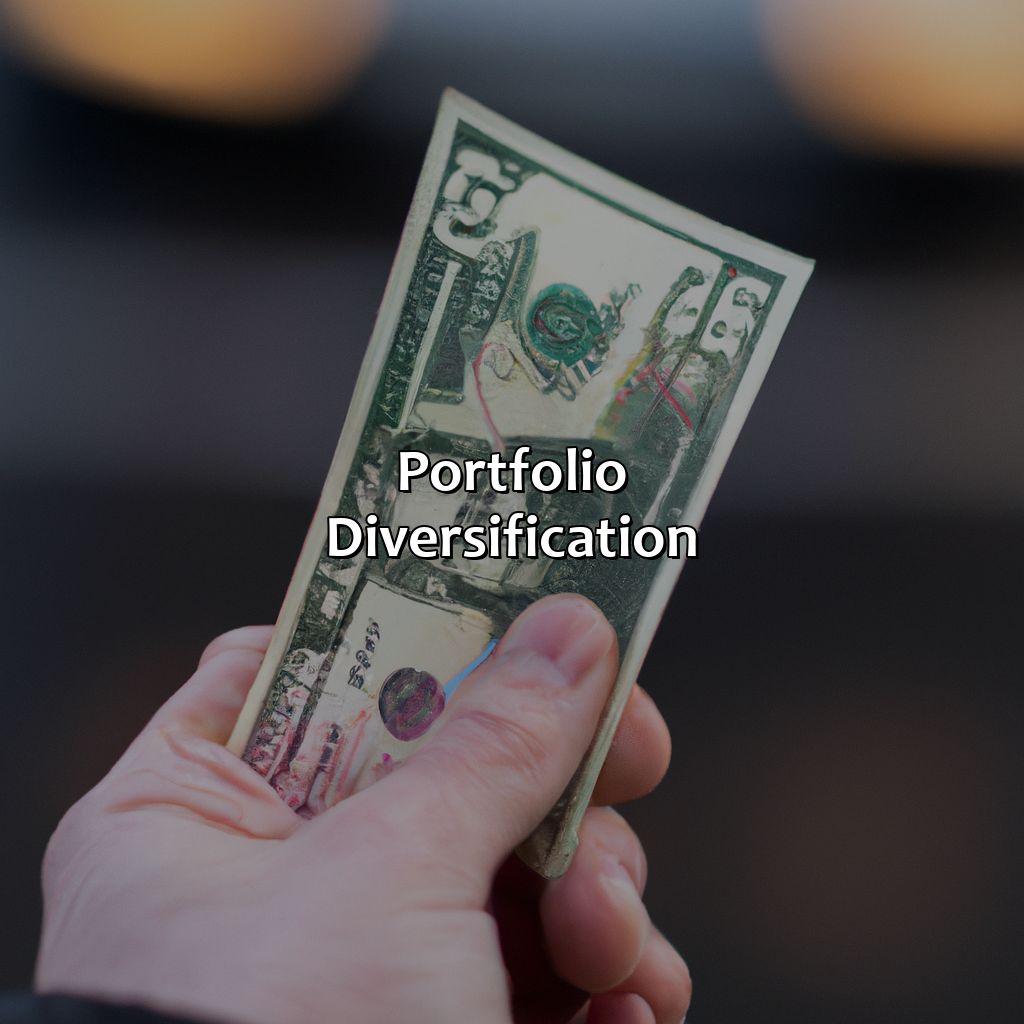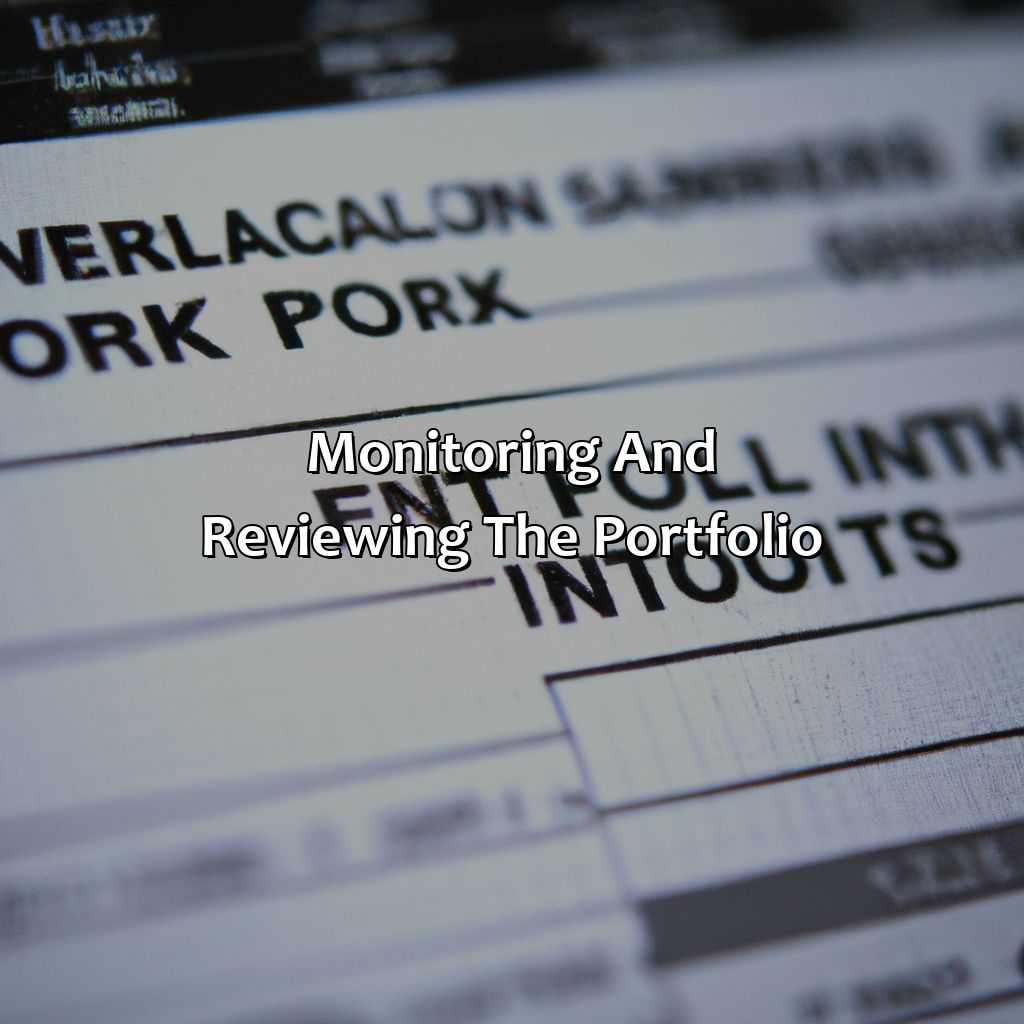How To Start An Investment Portfolio?
Key Takeaway:
- Determine Your Investment Goals: Before investing, it is important to determine your goals, such as building wealth, saving for retirement, or generating regular income. Knowing your investment goals can help you choose the right types of investments and asset allocation.
- Embrace Portfolio Diversification: Investing in a mix of asset classes—stocks, bonds, and mutual funds—can help reduce overall portfolio risk, while still providing long-term growth opportunities. Focus on low-cost index funds to add broad diversification to your portfolio.
- Monitor and Review Your Portfolio: Once you’ve built your investment portfolio, it’s important to monitor and review it regularly. This means assessing your portfolio’s performance and making adjustments as necessary to keep it aligned with your investment goals and risk profile.
Struggling to create your own Investment Portfolio? You’re not alone. Knowing where to start can be daunting. This article will guide you through the steps to start creating an investment portfolio that works for you.
Determining Investment Goals
Establish clear goals first. Understand if you’re investing for the short or long term.
Then assess your risk appetite, to minimize risks. This will optimize returns and protect you. Read on for more info!

Image credits: retiregenz.com by David Woodhock
Short-term versus Long-term Goals
Investment goals can be categorized into two types- Goals that can be achieved in the short-term and those that take a long time to accomplish. Short-term goals are aimed at achieving quick returns, usually within a year, while long-term goals are about securing one’s financial future and require investments that span over several years. When creating an investment portfolio, it is crucial to consider the desired timeline of achieving your goals and select investments accordingly.
If you have short-term goals, investing in low-risk securities like certificates of deposit (CDs) or money market accounts may be beneficial. These options offer decent returns on investment, are FDIC-insured, and has minimal risk of loss. However, for long-term goals such as retirement planning, it is essential to invest in high-risk securities like stocks or mutual funds that increase your investment’s earning potential.
To determine the right investment strategy for your portfolio, considering factors like risk tolerance and age will be helpful. It is also important to regularly review your investment portfolio to ensure they align with your current needs and adjust as necessary.
Studying shows that only 55% of Americans invest in the stock market.
Figuring out your risk appetite is like deciding whether to bungee jump or take the stairs – only one might leave you with a broken portfolio.
Risk Appetite Assessment
Understanding one’s investment preference and appetite for risk is crucial when starting an investment portfolio. By conducting a Risk Tolerance Analysis, investors can determine their ability to handle market fluctuations and allocate assets accordingly. It involves personalized questionnaires that investigate factors like age, income, goals, and attitudes towards risk that a person may have. The analysis assists in tailoring an investment plan focusing on balancing risks with expected returns.
It’s imperative to comprehend the correlation between risk and return since taking high risks doesn’t necessarily guarantee higher returns. An investor must have a comprehensive grasp of diversification across asset classes to mitigate risks while ensuring suitable investments meet their goals. Overall knowledge of concepts like alpha, beta, sharpe ratio, P/E Ratio is beneficial to create a profitable portfolio.
Investors with low-risk appetites gain information on investing in low volatility stocks or bond portfolios during the Risk Appetite Assessment process. On the contrary, individuals with higher-risk appetite can invest in more volatile assets such as individual stocks or ETFs focused on specific sectors’ growth prospects. Robo-advisors are digital platforms utilizing algorithms based on a range of data sets to assist in creating suitable portfolios for potential investors.
A friend was advised to invest her savings solely in a high-yield savings account during her Risk Appetite Assessment process due to her low tolerance for risk. However, following months of research and consultation with multiple financial advisors’, she invested the capital equally in bonds and exchange-traded funds that aligned with her long-term financial goals.
Investments are like pizza toppings, there are so many options and everyone has a different preference.
Types of Investments
To grasp the investments that match your objectives, tastes, and capacity to endure risk in the portfolio creation voyage stated in “How to Start an Investment Portfolio,” investigate the following sub-sections:
- Stocks
- Bonds
- Mutual Funds

Image credits: retiregenz.com by James Woodhock
Stocks
With regards to equity securities, there is a popular investment type that typically represents the partial ownership of a company. This particular form of investment is known for its growth potential and risk. Investors should aim for a well-balanced stock portfolio by investing in various sectors, industries and geographic areas to minimize risks.
The following table showcases stock investments by categories such as Large-Cap, Mid-Cap, Small-Cap Companies as well as Growth and Value Stocks:
| Stock Category | Company Size | Investment Style |
|---|---|---|
| Large-Cap Companies | Over $10 billion in market value | Growth & Value |
| Mid-Cap Companies | Between $2 billion – $10 billion | Growth & Value |
| Small-Cap Companies | Below $2 billion in market value | Growth & Value |
It’s important to note that when investing in stocks, investors should understand the company’s financial standing, future plans, management team reputation and other relevant factors before making any investment decisions.
While diversifying your portfolio with stocks from different categories can reduce risks, it’s crucial for investors to remain aware of how each stock contributes to their overall portfolio goals.
Stocks have undergone significant modifications since first debuting on Wall Street. The first recorded transaction occurred in 1602 when Dutch East India Co. issued shares of their company for public purchase. For centuries after that, selling company shares remained a mostly European practice until American businesses began selling stocks to help fund railroad ventures during the early 18th century.
Want to feel like a secret agent while investing? Bonds are the perfect way to have a license to yield.
Bonds
Fixed-Income Securities are a type of investment in which investors lend money to the issuer for a fixed period, interest rate, and amount. These securities are commonly known as Bonds and offer stable returns with lower risks than equity investments. Bonds can be issued by governments, corporations or municipalities, and have different credit ratings based on their financial strength. The interest earned on bonds can be paid periodically or at maturity, providing investors with steady income.
Bonds’ prices are affected by interest rates and inflation expectations. When the market believes that inflation is increasing, the price of bonds decreases to compensate for the lost purchasing power of future income streams. Conversely, when interest rates decrease, bond prices rise because they provide higher returns than other low-risk investments such as savings accounts.
Investors can diversify their portfolios by investing in different types of bonds such as Treasury bonds, corporate bonds, municipal bonds or high-yield bonds. Each type has its benefits and risks depending on the issuer’s creditworthiness and economic conditions.
During the Great Depression era in 1929-1932, the US government introduced Treasury Bonds with longer maturities up to 30 years to fund its programs during the depression crisis. The issuance of these long-term bonds helped stabilize government funding in uncertain times and provided investors with safe long-term investments.
Mutual funds are like a box of chocolates, you never know what you’re going to get, but at least you won’t end up with a cavity.
Mutual Funds
Investments that pool money from multiple investors to purchase securities are referred to as Collective Investment Schemes. This can be done through Mutual Funds, which are operated by professional investment managers to gain maximum returns. With a diversified portfolio of stocks, bonds or other securities, investors benefit from reduced risk and potentially higher returns. As these funds are professionally managed, the investors do not require any expertise in stock picking or analysis.
Apart from generating capital appreciation, many mutual funds often offer regular dividends and re-investments in the same fund based on market trends. However, it is essential to consider factors like the expense ratio and track record before investing. These funds follow a set investment strategy and may focus on different sectors with varying degrees of risk-return. It is crucial to identify one that aligns with your financial goals and safeguards against unforeseen market fluctuations.
Opt for Systematic Investment Plans (SIP) that allow you to invest periodically instead of a lump sum amount in one go. This helps in better management of finances while taking advantage of averaging out investment costs over time.
Pro Tip: Before investing in any Mutual Fund scheme, research the reputation and performance history thoroughly; don’t get swayed by high returns alone.
Putting all your eggs in one investment basket is like eating only one type of food for the rest of your life – boring and risky.
Portfolio Diversification
Maximize your gains with a diversified portfolio! Risk management and rebalancing strategies are key. Allocate assets cautiously, and rebalance regularly to manage risk. Doing so will help you understand the importance of diversification.

Image credits: retiregenz.com by David Jones
Importance of Risk Management
Managing risks in your investment portfolio is crucial. By diversifying your holdings, investing in different asset classes and sectors, you can mitigate the potential for significant losses from market volatility. A well-diversified portfolio includes a mix of stocks, bonds, and other assets such as real estate or commodities.
To minimize risk, consider investing in exchange-traded funds (ETFs), which offer broad exposure to various asset classes. Also, review your portfolio regularly to ensure it aligns with your goals and risk tolerance.
While some investors are comfortable taking risks, others prefer a conservative approach that balances their goals and objectives with potential risks. Additionally, keeping cash or other liquid assets on hand can provide a safety net in case of emergencies.
Overall, effective risk management requires planning and consideration of various factors such as economic conditions and geopolitical risks. By diversifying across asset classes and embracing different investment strategies, investors can reduce their exposure to market volatility while still achieving their financial goals.
“Re-balancing a portfolio is like rearranging deck chairs on the Titanic, but at least you’re doing something productive.”
Portfolio Re-balancing Strategies
Maintaining a well-crafted portfolio is all about finding the right balance of risk and reward. One of the crucial steps in this process is to optimize it through ‘Portfolio Rebalancing Strategies.’ These strategies aim to adjust the portfolio’s asset allocation over time to keep it aligned with an investor’s goals and objectives.
One effective method for rebalancing your portfolio is by adhering to a strategic asset allocation plan that defines your target level of investment in various assets. This approach involves periodic adjustments of underweighted or overweighted assets in your portfolio, ensuring you stay on track to meet your financial goals.
Besides, another technique for optimizing your portfolio could be by utilizing dynamic rebalancing strategies that allow you to take advantage of market fluctuations actively. This approach entails executing trades more frequently than traditional asset allocation plans and has the potential upside to deliver higher returns.
Remember, no matter which method you choose; regular monitoring and adjustments are essential for maintaining a diversified and balanced investment portfolio.
In essence, having a well-diversified investment portfolio plays a vital role in achieving financial security. As markets shift, investors who do not actively monitor their portfolios run the risk of missing out on gains or being exposed to excessive risks. Therefore, taking a proactive approach towards regularly re-balancing one’s investments can help you avoid pitfalls and maximize returns over time while minimizing any unwarranted risks.
Building a portfolio is like assembling a puzzle – it takes time, strategy, and you might have to toss out a few pieces along the way.
Building a Portfolio
To attain the desired returns, you must have a good asset allocation strategy. To do this, choose Asset Allocation and invest in Low-cost Index Funds. These two sub-sections will help you accomplish your investment goals efficiently and systematically.

Image credits: retiregenz.com by Adam Woodhock
Choosing Asset Allocation
Achieving Optimal Asset Distribution
Achieving optimal asset allocation is crucial for a well-diversified portfolio. Evaluation of risk tolerance, investment goals, and the time horizon forms the basis for an ideal balance between stocks, bonds, and other securities.
In addition to these factors, investors must track the performance of their investments regularly. As investment objectives evolve over time, so should asset allocation. Review your portfolio often to ensure that it aligns with your financial goals and optimized returns. Adjusting the percentages in each asset class may help keep this balance intact and in line with long-term objectives.
Invest smartly, avoid being left behind due to poor investment decisions. Take control of your finances today by proactively building a diversified investment plan!
Who needs a personal financial advisor when you’ve got index funds that do all the heavy lifting for you?
Investing in Low-cost Index Funds
Making a smart investment in the financial market is essential for building your portfolio. Emphasizing on investing in index funds that are low-cost may provide great returns. Index funds usually track the performance of particular indexes such as S&P 500, which means you’ll own all the stock within that index, making it low-risk.
Following this strategy, you will be diversifying your investments and be part-owner of a wide range of companies included in the index portfolio. This requires minimal management fees and provides overall performance similar to the market itself, so there’s no need to hire an expensive active fund manager.
One unique benefit of this strategy is that any time an exchange-listed company gets added or removed from the benchmark index, your portfolio will also get adjusted accordingly after timely verification by index providers.
Similarly, adding government bonds along with equity allocation can help balance risk-return tradeoffs. Experts recommend keeping some cash reserves as a buffer against emergencies or sudden investment opportunities.
Overall, investing in low-cost index funds can be a good way to start building a diversified investment portfolio without breaking the bank and without needing much knowledge about investment management. Keep an eye on your portfolio like a hawk, but don’t swoop in for emotional reactions like a seagull.
Monitoring and Reviewing the Portfolio
Track your investments’ progress and make changes to your portfolio with performance benchmarks! “How to Start an Investment Portfolio” can help you monitor and review your investment portfolio effectively. Plus, you can adjust your investments to achieve your financial goals.

Image credits: retiregenz.com by David Arnold
Using Performance Benchmarks
When evaluating your investment portfolio, utilizing benchmarks to measure performance is crucial. By setting specific standards and comparing against them, you can get a better understanding of how well your investments are doing in relation to the market or industry. The selected benchmark should be relevant to the specific investment type. For example, an equity or stock fund would use a different benchmark than a bond fund. This ensures a fair comparison that provides valuable insight into the effectiveness of your efforts.
Using performance benchmarks also aids in identifying trends and patterns that may have otherwise been missed. Comparing returns at regular intervals helps detect problems earlier, allowing for timely intervention. While devising an investment portfolio strategy, it is vital to select the correct benchmarks carefully and define clear parameters.
To accentuate this point, consider Harry’s investment choices: he invested predominantly in software and technology-related companies during a bullish trend, hoping to profit off of rising prices. However, once tech stocks took a hit in 2018 due to regulatory issues, Harry’s portfolio recorded substantial losses due to not having proper diversification. By examining appropriate benchmarks ahead of time while keeping up with their performance regularly, Harry could have recognized the risks associated with investing only in tech companies and made adjustments accordingly.
Making Changes to the Portfolio
Optimizing Investment Portfolios through Smart Reviews
Investment portfolios must be monitored and periodically reviewed to optimize their performance. The process of reviewing your portfolio involves assessing investment goals, risk tolerance, and current market conditions to make changes as needed.
To begin the review process, analyze each holding in the portfolio and evaluate how it aligns with the overall investment strategy. Determine whether any stocks or mutual funds are underperforming or have high fees that could be reduced. Additionally, consider any potential new investment opportunities based on market trends.
Making changes to the portfolio is not a one-time event but rather an ongoing process. The best time to make changes would depend on market conditions and the type of securities held within a portfolio. Rebalancing a portfolio regularly can offer benefits like reducing risk while maximizing returns.
A smart approach to making changes is based on research and studying trends through past events or economic cycles. For example, during the dot-com bubble burst of 2000-01, many technology companies saw their stock prices fall drastically causing investors to suffer big losses. Those who invested in other sectors like healthcare felt relative security from this crash, so those types of portfolios fared better.
Five Facts About How to Start an Investment Portfolio:
- ✅ Determine your investment goals and risk tolerance before making any investments. (Source: The Balance)
- ✅ Choose a diverse range of investments to minimize risk and maximize return in the long term. (Source: Investopedia)
- ✅ Stay updated on market trends and news relevant to your investments. (Source: Forbes)
- ✅ Consider consulting with a financial advisor to guide your investment decisions. (Source: NerdWallet)
- ✅ Regularly review and adjust your investment portfolio to ensure it aligns with your goals and risk tolerance. (Source: Schwab)
FAQs about How To Start An Investment Portfolio?
What is an investment portfolio?
An investment portfolio refers to the collection of different investment assets that an individual or organization uses in order to achieve their financial goals and objectives.
How to start an investment portfolio?
To start an investment portfolio, you can follow these steps: assess your financial goals, determine your risk tolerance, choose your investments, set a budget, regularly review and adjust your portfolio.
What are some examples of investment assets?
Some examples of investment assets include stocks, bonds, mutual funds, exchange-traded funds (ETFs), real estate, and commodities.
Should I diversify my investment portfolio?
Yes, diversification is key to reducing risk in an investment portfolio. Make sure your portfolio includes a variety of investment assets from different industries and sectors of the economy.
How much money do I need to start an investment portfolio?
The amount of money needed to start an investment portfolio varies depending on your financial goals and the type of investments you choose. Some investment options may require a larger initial investment, while others may be more accessible for beginners with a smaller budget.
What are some common mistakes to avoid when starting an investment portfolio?
Some common mistakes to avoid when starting an investment portfolio include not diversifying your investments, letting emotions guide your investment decisions, and failing to regularly review and adjust your portfolio. It’s important to do your research, seek advice from financial experts, and stay disciplined in your investment strategy.
